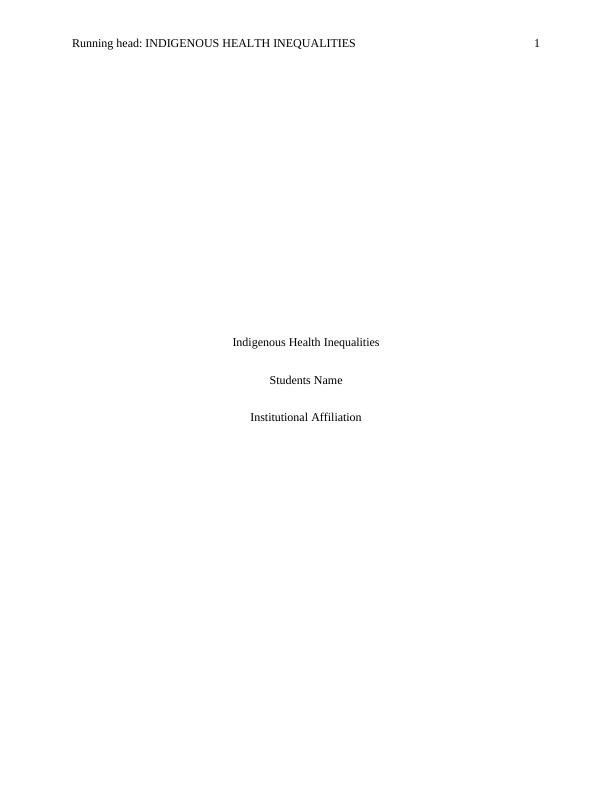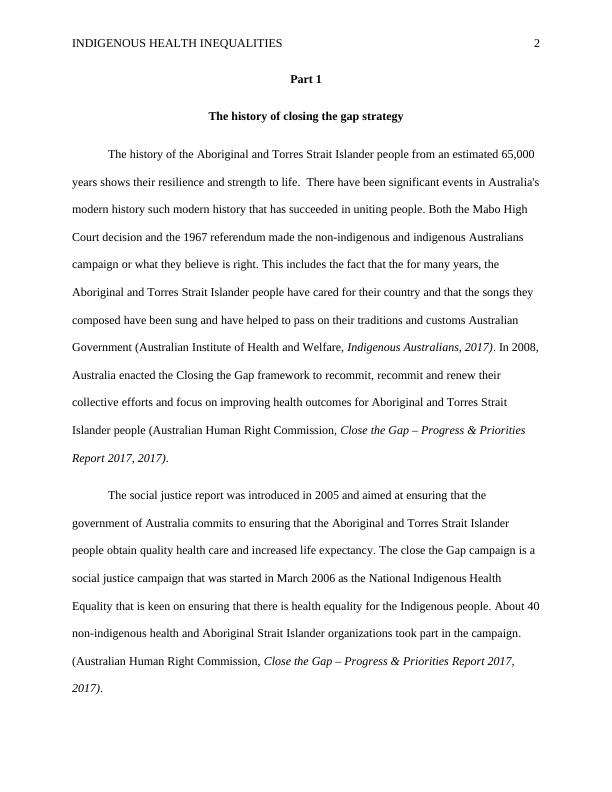PUBH6000: Social, Behavioural and Cultural Factors in Public
9 Pages2074 Words26 Views
Social, Behavioural and Cultural Factors in Public Health (PUBH6000)
Added on 2022-01-06
PUBH6000: Social, Behavioural and Cultural Factors in Public
Social, Behavioural and Cultural Factors in Public Health (PUBH6000)
Added on 2022-01-06
ShareRelated Documents
End of preview
Want to access all the pages? Upload your documents or become a member.
Assignment on Indigenous People of Australia 2022
|7
|2116
|33
Closing the Gap Policy & Its Impacts in Australia
|8
|2421
|292
Close the Gap Policy in Australia: Challenges and Approaches
|9
|2037
|245
Closing the Gap Strategy: A Governmental Approach to Achieve Health Equality
|17
|4482
|46
Assignment about Closing The Gap (CTG)
|9
|2421
|23
Closing the Gap Strategy | Australia
|9
|2245
|22



